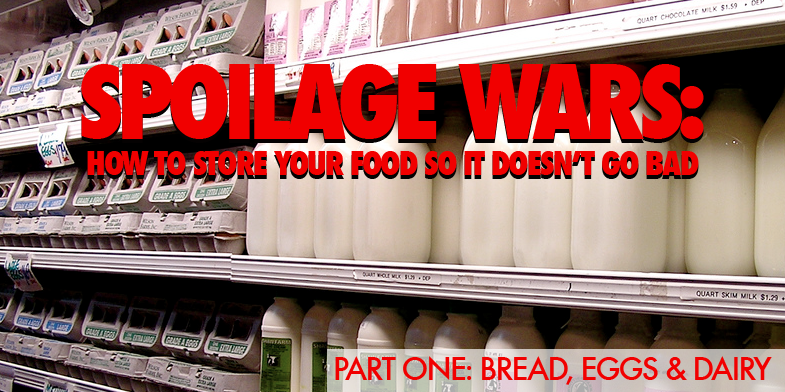
Don’t Put Your Bread In The Fridge & Other Important Food Storage Tips Image courtesy of (photo: liz west)
We’ve all got a somewhat innate sense of where to store the foods we eat in our modern cultures — you’re not going to stick your ice cream in the pantry and expect it to stay frozen, or freeze your fresh apples. But what about butter — countertop or refrigerator? Should I really use that “eggs” slot on the inside of my fridge door? Answer us, oh kitchen gods!
Julia Collin Davison is an executive food editor for the book division of America’s Test Kitchen and is an on-screen test cook for America’s Test Kitchen and Cook’s Country from America’s Test Kitchen. And she was also kind enough to chat with Consumerist about some of the foods we think people might be storing incorrectly.
Today, we’ll focus on some of the more perishable (and debated-about) items in your kitchen: Dairy, eggs, and bread.
EGGS:
Where to store: In the refrigerator, obviously, but more precisely…
Where exactly: In the back of the fridge– not in the door, even if your fridge has one of those egg-holder things. “Those holders are in a horrible location, because eggs need to be stored as cold as possible and that door is the warmest place,” notes Davison. “So take that thing out, it’s usually removable, and store them in the back of the fridge.”
BUTTER:
Where to store: For daily use, either the countertop or in the refrigerator will do. For long-term storage, put that butter in the freezer.
How to store it: Butter really likes to absorb certain smells, so keep yours wrapped and/or covered and away from smelly foods so it won’t take on their odors.
Butter on the counter… really? There is a bit of war (at least in the Consumerist bat cave) between those who think it’s perfectly okay to store your butter in a “butter bell” on the counter and those who think that’s just revolting. We were hoping Davison could declare which side of this divisive issue was in the right, but alas… it’s somewhat of a stalemate.
“For short-term storage, like if you’re going to go through a stick pretty quickly, whether you choose to keep it in the butter bell on the counter or whether you just to keep it in the fridge — it’s kind of your call,” she explains.
And so the war wages on.
YOGURT:
Where to store: In the refrigerator, for goodness’ sakes.
Why are we even including this one? I had to add this one out of fear that some people might find it okay to keep yogurt unrefrigerated. As Davison points out, she’s seen corner stores in New York City with unrefrigerated yogurt. So um, don’t do that.
CHEESE:
Where to store: Refrigerator
How: The ATK team found that those pricy wax-paper specialty cheese storage bags you can buy keep cheese at its freshest, but a zip-top plastic bag should do just fine. Keep air out of it and keep it cold; that’s what you’re looking for.
BREAD:
Where to store: For daily use, it’s fine to keep it on the counter in a breadbox or whathaveyou, or in the pantry. If you’re storing the bread, or storing gluten-free breads, the freezer is your best best. Don’t put it in the fridge (more on that in a second).
What about plastic bags? In a bag, air is the enemy. If you live in a humid climate you can leave that bag open a little bit to prevent moisture build-up.
What’s wrong with keeping bread in the fridge? “Bread should not go in the refrigerator, period,” Davison says. “The refrigerator will speed up the staling process, a process called retrogradation. It’s the process of the removal of moisture from products.”
She adds that homemade gluten-free bread will stale within hours of baking, so she suggests slicing homemade loaves and throwing them in a plastic bag in the freezer to take out as you need.
The next part of Spoilage Wars will look at where to put your fruits and vegetables, and how to keep them from rotting as soon as you get them home from the supermarket.
Want more consumer news? Visit our parent organization, Consumer Reports, for the latest on scams, recalls, and other consumer issues.

